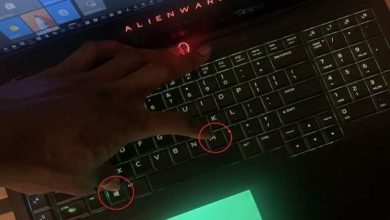25 Health & Safety Tips you Should Never Ignore
Health & Safety Tips you Should Never Ignore while Working with Computers

Health & Safety Tips – computer has come to be one of the best inventions of man. We use them almost everyday. The blinking screens, the notifications & updates from social networks, the HD cameras, and the clicks of keypads excite us like the way a hypodermic needle excites a junkie. They’ve come to make life easier and hence become part of our daily lives. Now, we feel we can’t do without them.
When used properly, these devices are virtually harmless but just like the man we are, some of us have chosen to put a secondary need (computers and smartphones) before a primary need (health and safety).
I’m not about to dictate to you how to use your device, but I’m here to give you tips on how to use it so it won’t intrude on your health and safety. These tips involve setting up an ergonomic workspace and working under safe and healthy conditions.
Also Read: 9 Most Deadliest Computer Viruses that Stood the Test of Time
Setting Up an Ergonomic Workstation
Whether you use a notebook/laptop, a desktop, or a smartphone; a proper working environment will help you work comfortably, maximize the best of your time and minimize disorders associated with unwholesome computer usage.
- When working with a notebook/laptop, do not place it directly on your lap for long hours.
- The computer monitor, mouse, and keyboard should be placed on a hard, flat surface, (preferably a table) and they should all be on the same surface.
- Sit on a comfortable chair with an adjustable height, cushion, backrest, and arms—a swivel chair marches these descriptions.
- The monitor should be placed at arms-length from your eyes.
- The monitor should also be positioned in such a way that the top of it is on the same level as your eyes.
- When typing from a paper, the paper should be clipped to a document holder and placed very close to the monitor.
- The monitor should be one that can be swiveled, tilted, and elevated.
- Your keyboard should also be one with adjustable legs.
- Allow your wrists to be positioned on the keyboard in such a way that it is in line with your forearm so that your wrists do not need to be flexed up or down.
- Where necessary, use a footrest.
- The table should have enough room to hold the computer accessories and any other equipment or material that you are working with.
- When using a notebook for long periods of time, connect it to a docking station.
- Do not allow your workspace to be jam-packed with a maze of intertwined wires and cables.
- Ensure you plug the power cord into an easily accessible socket.
- Use supported accessories at all times.
Also Read: 10 Signs of a Malware Infection on your Computer
Ensuring Healthy and Safe Working Conditions
- Do not stick to the default screen brightness, adjust it to suit the lighting conditions in the room.
- Ensure that dust does not accumulate on your screen. Dust it off when it does.
- To reduce glare; close blinds and windows, attach glare-reduction filter to the monitor, and back your monitor to the source of light.
- Using computers and smartphones requires your attention and impair your ability to make quick and cognitive decisions, don’t use them when it will interfere with your work.
- Do not use your computer or smartphone while driving or walking on the street.
- Off/silent them when it will cause a distraction to you and others. For example in religious gatherings and lecture halls.
- Exercise your eyes at intervals by focusing them on objects of varying distances.
- Do not remain in a position for a very long time. Take regular breaks from the computer by strolling around, flexing your fingers and neck.
- Blink regularly to keep your eyes moist.
- Adjust the screen contrast to ensure that the characters are distinguishable.
Dangers of Ignoring These Tips
Prolonged and unhealthy use of computers and smartphones has been linked to tendonitis, carpal tunnel syndrome, computer vision syndrome, tenosynovitis, repetitive stress injuries, and other musculoskeletal problems.
Symptoms of these disorders include (but are not limited to) pain, throbbing, numbness, watery eyes, headaches, burning, tingling, soreness, and numbness. Others are aching, burning sensations, stiffness, swelling, etc.
These symptoms can be felt in the wrists, fingers, arms, neck, back region, eyes, shoulders, etc.
Apart from disorders, distraction-caused problems might also arise when we use computers and smartphones at the wrong time and place or during cognitive performance. Some of them are vehicle/traffic accidents, stumbling and falling, falling into a gutter, jamming a passerby, unable to meet up with a work schedule, electrical burns, and even death.
Also Read: 9 Most Deadliest Computer Viruses that Stood the Test of Time




you are welcome.
okay, thanks for your comment.